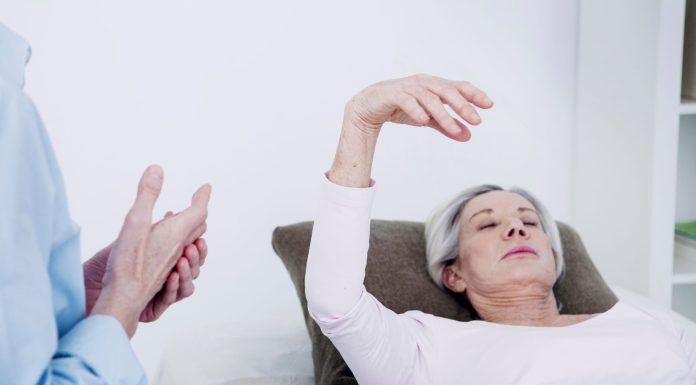When someone at home needs some extra health care it may be helpful to adapt your home in some of the following ways.
Perhaps the person will need to stay in bed or is unable to move around very much. They can do that in their own bedroom or perhaps, they prefer that the bed is moved to a more common room, like a living room or den. In this way they can participate in the daily activities of the family. They may want to stay on the main floor for a while to avoid climbing any stairs. It may be helpful to have the bed near to a bathroom so the person does not have far to travel. Carpeted floors (not throw rugs) help make sure the person is less likely to slip and fall and also cuts down on noise. Being near a window and sunlight is very enjoyable for many people as well as being surrounded by favourite pictures, music and pets. The room should be comfortably warm or cool depending on the season, with good air ventilation (without causing drafts).
Some furniture that is helpful to have in arm’s reach of a comfortable bed includes:
A small table (the same height as the bed) for medication, snacks, radio, writing paper, etc. Even better is a table with a few drawers (like in a hospital) where a person can put some personal items like comb, brush, toothbrush, mirror, box of tissues, urinal or bedpan.
A comfortable armchair nearby where they can sit, perhaps look out a window, watch television or read. The chair should be high enough so that it is easy to get in and out of.
A sturdy foot stool to help the person get in and out of bed if the bed is too high.
A small bell, intercom or buzzer to call for help.
Something fresh to drink especially water and some favourite snacks.
A place to put magazines, books, television remote controls, knitting or other leisure things.
Good lighting for talking with people, reading, or watching television.
A sturdy food tray to help make eating more comfortable in bed.
A telephone.
You may also need some special equipment to help you. Talk with your home care case manager to arrange for the things that you need to borrow, rent or buy. These may include:
An adjustable bed (similar to a hospital bed).
A bed table high enough to fit over one’s knees lying in bed.
A bed cradle to protect a sensitive part of the body from the weight or movement of sheets and blankets.

A back rest to help a person sit up in bed.
Sheepskin padding or pillows, foam or sponge pads to help prevent bedsores.
Incontinence pads for under the person in bed in case there is any urine or feces (stool) incontinence.
A footboard made of strong cardboard, or hard pillow or something else quite creative to allow the person in bed to push against it so that they can keep their body position comfort
able. Often people who are sitting up in bed end up sliding down the bed to uncomfortable positions.
Adaptive devices may be helpful such as:
A walker, wheelchair or canes to help the person move about.
A commode so the person does not have to use the bathroom.
Grab bars along hallways when walking, on staircases, in bathrooms by the toilet and in the tub/shower, near the bed, etc.; wherever a person could use a bit of extra support with their balance and movement.
There are many simple aids to help with lifting, reaching, and eating. Ask an occupational therapist for what might best help in your situation.
A backrest specific for the person may help for long periods of bed rest.
Preventing Falls
People fall most often in their own homes. This can lead to serious injuries such as broken hips in elders or broken wrists. These falls often happen because of:
Loose rugs.
Wet or slippery floors.
Objects left on the floor (toys, magazines, paper).
Check with your physiotherapist or nurse about ways to make the home safe. If the person needs their home adapted for long-term care situations you might:
Ask home care for side rails on the bed for someone who might fall out of bed.
Install night lights so someone doesn’t fall in the dark on the way to the bathroom or to get a snack from the kitchen.
Install grab bars in the bathroom by the toilet, sink and in the bathtub/shower.
Install handrails in hallways and staircases.
Laying down non-slip mats in the bathroom, by the kitchen sink, in entranceways to the home where there is no carpet.
Lower frequently used objects from upper shelves in kitchen, bathroom, bedroom and other common areas.
Either get rid of throw rugs or secure them with tacks or two-sided tape.
Make sure all electrical, telephone and other cords are under carpets or laid along the baseboards. If a cord must be in a pathway, secure it with wide tape.
Put a slip-resistant floor finish on hardwood floors.
Older people need better light to see so increase lighting in the home and have a flashlight by their bedside in case the power goes off.
Make sure the layout of the furniture allows easy access to exits, hallways, telephones, etc., so a person does not need to move around too many objects in their daily movements.
For information on modifying or renovating your home using mostly volunteer labour and donated or lower cost materials, go to http://www.legacies.ca and read/print off the free online book, No Place Like Home.
Caring For Loved Ones At Home – Free eBook – click here.
Click here for Harry’s previous article on Understanding Illness.























